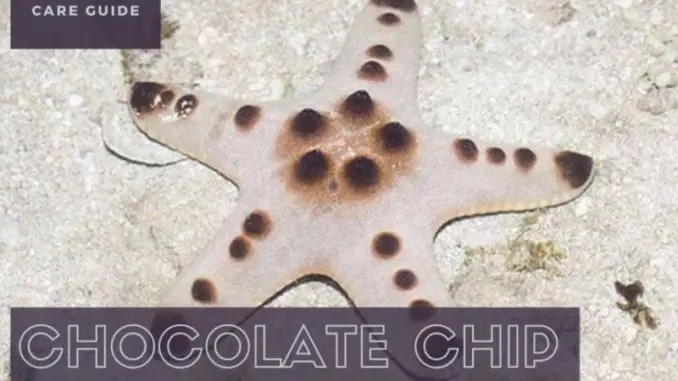
The Chocolate Chip Starfish is a stunning and unique echinoderm to have in your saltwater tank. They are easy to care for and readily available, and it’s fun to watch them attached to the walls of the tank.
It’s also fascinating to see the interesting way these creatures consume their food. Known for their horn-like protrusions that resemble their namesake – chocolate chips, these sea stars are generally peaceful but not always innocuous. A word of caution: Chocolate Chip Starfish are not reef safe and will eat your coral.
However, if you have a Fish Only With Live Rock (FOWLR) aquarium, the Chocolate Chip Starfish may be a good option for you. With their short stubby body and appendages and those delicious-looking chocolate chips on top, they are super fun to have in your aquarium.
In this guide, I’ll go over everything you need to know about caring for these intricate sea stars in your home saltwater aquarium, including their behavior, appearance, and best practices for proper care. My guess is you’ll be starry-eyed about adding one of these little gems to your tank.
TABLE OF CONTENTS
Chocolate Chip Starfish Facts & Overview
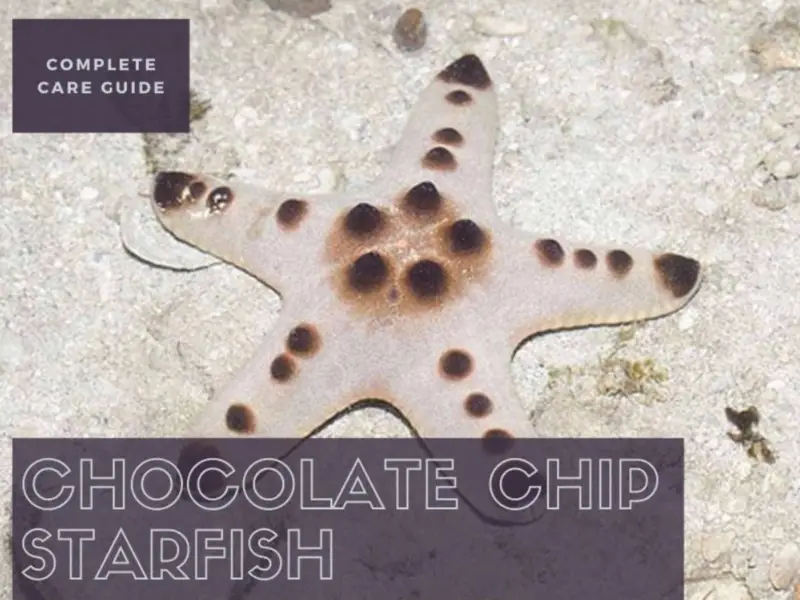
| Category | Rating |
| Care Level: | Easy |
| Temperament: | Peaceful |
| Color Form: | Varied with black spines |
| Lifespan: | Up to 20 years |
| Size: | Up to 15 inches |
| Diet: | Carnivore |
| Family: | Oreasteridae |
| Minimum Tank Size: | 30 gallons |
| Tank Set-Up: | Saltwater (not reef safe) |
| Compatibility: | Peaceful commnunity |
Chocolate Chip Starfish, the scientific name Protoreaster nodosus, are found in the Pacific Ocean, the Indian Ocean, and the Red Sea, in such areas as Indonesia and the Solomon Islands. Usually seen in lagoon areas, they enjoy shallow, sandy conditions. However, they are also found in reef areas as deep as 100 feet, as well as in muddy grassy areas.
The Chocolate Chip Starfish is also known as the Chocolate Chip Sea Star, the Horned Sea Star, and the Nodular Sea Star.
Pro tip: This guide is about the Protoreaster nodosus. The Nidorellia armata, found in warmer climates in the Eastern Pacific, is also known as the Chocolate Chip Starfish. Nidorellia armata is a different species and is found in some areas of Peru, the Galapagos Islands, and the Gulf of California.
In the wild, Chocolate Chip Starfish sometimes appear at low tide but prefer to remain submerged. Sadly, their intricate skeletal pattern makes them fodder for locals to make money, and dried Chocolate Chip Sea Stars are often sold to tourists as souvenirs.
Chocolate Chip Starfish can live up to 20 years in the wild, but their lifespan in captivity averages about 5 to 7 years. One interesting fact is that Chocolate Chip Starfish come in many sizes.
Typical Behavior
As soon as you introduce your Chocolate Chip Starfish to their new home, they are likely to attach themselves to a large live rock or the glass of the tank. Sometimes you will see them on the sandy substrate, too.
One interesting behavior is how they eat — starfish extend their stomachs out of their mouths and onto their prey and then retract the stomach back in.
Chocolate Chip Sea Stars gather water for their vascular system by pumping water through the madreporite, a structure on the surface of its body.
Their vascular system is also the circulatory system, which for invertebrates functions like the respiratory system. If an air bubble gets trapped in the starfish’s vascular system, paralysis and death could result.
That’s why it’s really important to avoid picking up your starfish and exposing it to air.
One vital thing to note is that you should never pick up your starfish and expose it to the air, as this action could kill them.
Curling
If you notice that your Chocolate Chip Starfish is curling, you may or may not need to be concerned. If your sea star is curled up into a ball, that could be a sign that your starfish is sick. Check the water parameters and look for signs of disease (check the “Care” section of this guide.)
If, however, you see your Chocolate Chip near the top of the water and attached to the glass with a couple of tentacles curled, they are probably just eating algae or detritus from the surface. They could also be hungry, so you could offer something to eat.
Appearance
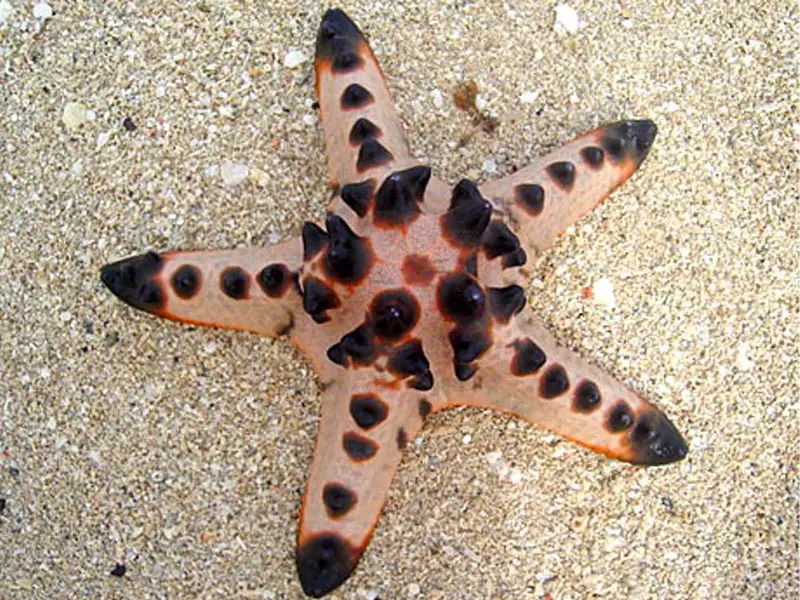
Your Chocolate Chip Starfish can vary in color: we’ve seen blue, cream, reddish-brown, yellow, and white hues on their bodies, but of course, they all carry the signature black spines. Starfish typically have 5 arms, like a 5-pointed star, but some have an extra, and some may have lost an arm to predators. Chocolate Chip Sea Star arms taper off at the end of the arm.
Its body and arms are both short and plump, and it’s covered with horn-shaped spines that are pretty pointy but may become blunter over time. These horny “chips” are generally believed to serve as a show of might against predators.
However, the intention may be less than successful, since tiny hermit crabs have been known to pick the horns off like a little kid picks chocolate chips out of a cookie.
If you look at the underside of the Chocolate Chip Starfish, you will see rows of tube feet that walk down the Chocolate Chip’s arms; these are pale and transparent, either pink or purple.
Distinguishing between males and females
There are no characteristics that allow one to differentiate between male and female Chocolate Chip Starfish.
Habitat and Tank Conditions

Chocolate Chip Starfish need a sandy substrate, which should be several inches deep. They do well in FOWLR (Fish Only with Living Rock) aquascape, since those do not contain live coral.
As they are scavengers, they’ll need algae, and they like to affix themselves to live rocks, so you should have some larger rocks, particularly if your Chocolate Chip Starfish is on the larger side.
Pro tip: Live rocks are not actually alive; they get their moniker because they are actually composed of coral skeletons and other calcareous organisms; thus, they are formerly alive.
You will also need a decent filter appropriate for a larger tank.
Water Conditions
Chocolate Chip Starfish need to be acclimated to your aquarium. Although they are sturdy creatures, they are extremely sensitive to sudden changes in water parameters. Their vascular system mimics the water surrounding them, so abrupt changes in pH, salinity, and oxygen put undue stress on their systems.
You should drip acclimate them for at least an hour before adding them to their new tank. They definitely cannot be dropped right into a new tank–that would be extremely dangerous to them.
Perform bi-weekly water changes to keep your tank as clean as possible. Starfish are sensitive to high ammonia, nitrite, and nitrate levels, which make them more susceptible to disease.
The optimal parameters for Chocolate Chip Starfish:
- pH levels: 8.1 – 8.4
- Water hardness: 8 – 12° dKH
- Water temperature: 72°F – 80°F (22°C – 27°C)
What Size Aquarium Do They Need?
You need at least a 30-gallon tank for Chocolate Chip Starfish, keeping in mind that some can grow up to 15 inches (38 cm). If your Sea Star grows that large, you will need a bigger tank, as you will if you have a larger, multi-species community.
Read Related Article: The Complete Guide to Sand Sifting Starfish Care
Tank Mates
The Chocolate Chip Sea Star does best with calm, peaceful fish. Predatory fish like Boxfish, Pufferfish, and Triggerfish should not be kept in a tank with Chocolate Chip Starfish. These aggressive fish are likely to kill your sea stars.
Hermit Crabs, as well, should be kept away from Chocolate Chip Starfish, as they have been known to pull the black spines right off the starfish and even eat their legs!
Chocolate Chip Starfish can give it, too, and should not be kept with coral, including pulsing xenia, sponges, and smaller invertebrates like clams and tubeworms.
Fish that can be kept with Chocolate Chip Sea Stars:
Additionally, some unlikely creatures have found a safe haven on the surface of Chocolate Chip Starfish. Brittle Stars, young filefish, and shrimp are often found squatting on these sea stars for safety.
Keeping Chocolate Chip Starfish Together
Chocolate Chip Starfish exist peacefully together, so the only reason to not have multiples would be a space issue.
Diet
Chocolate Chip Starfish are carnivores but will consume some plant detritus and algae.
They are scavengers and therefore adept tank cleaners, but you still need to feed them a varied protein diet.
You can offer them chopped clams, shellfish, shrimp, and squid. Starfish are not fast movers, so you can’t just put food in the tank and assume they’ll get to it. Any fish you have in your tank will easily win any food competition and your sea star will go without.
Therefore, I recommend placing the food next to your Chocolate Chip with tongs. Since they extract their stomach to grab their food, they will just hover over the food and suck it up, retracting their stomach when they grab it.
As mentioned before, Chocolate Chip Starfish will eat coral and other small invertebrates, so you’ll have to be careful in choosing your tank community.
Care
One important thing to remember when caring for your Chocolate Chip Starfish is that any medication with copper is contraindicated as copper is toxic to starfish. They also cannot tolerate anti-parasitic medications, so whether you’re treating your starfish or other fish in the tank, you should choose copper-free treatments, and if you have to treat your other fish with an anti-parasitic, you should move them to a separate quarantine tank.
Some of the things you should watch out for with saltwater inhabitants include ammonia, nitrate, and nitrite poisoning. Usually stemming from substandard water conditions, increased ammonia, nitrates, and nitrites from too much waste can be fatal to your Chocolate Chip Sea Star.
If your Chocolate Chip Starfish has white spots, there is a good chance they have Marine Ich, a parasitic infection that is both highly contagious and fatal if it’s not treated promptly. The front-line treatment for Ich is copper-based, so be sure to choose the copper-free alternative.
Velvet has a similar presentation to Ich, but the spots are smaller and sometimes appear grey. Many non-prescription medications treat both Ich and Velvet.
The best prevention for all the above diseases is maintaining an impeccable tank. Check water levels regularly, perform bi-weekly partial water changes, and invest in a quality filter. If your ammonia, nitrate, and nitrite levels are running high, reduce the amount of food you’re offering (overconsumption and uneaten food both lead to increased waste.)
You could also consider getting a cleaner for your tank. Tangs are good saltwater cleaners. Hermit crabs are great cleaners, but I don’t recommend putting them with Chocolate Sea Stars if you want your starfish to live. Of course, Chocolate Chips themselves are great scavengers, so if you have one and your tank is still testing high, you may need to up your cleaning game.
Breeding
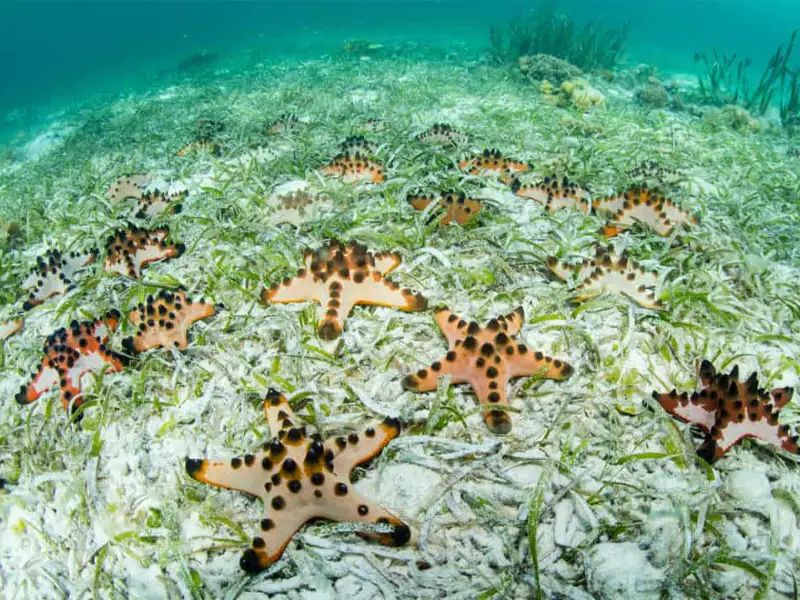
Chocolate Chip Snails are not recommended for breeding in captivity. It just doesn’t work. You won’t be able to achieve the water depth necessary for breeding Chocolate Chip Starfish; in the wild, they spawn in deep water. Furthermore, Chocolate Chip Sea Stars breed at the full moon–you won’t be able to recreate the salinity and temperature needed for successful breeding.
Check Also: The Ultimate Blood Shrimp Care Guide
Are Chocolate Chip Starfish Suitable for your Aquarium?
Curating your saltwater aquarium is a significant task. Whether the beautiful Chocolate Chip Starfish is the right fit for your aquarium will depend on what your needs are. If you are rocking a gorgeous reef biosphere, the Chocolate Chip Starfish might not be the best choice.
Similarly, if you love boxfish or hermit crabs, you’ll want to skip the Chocolate Chip for the safety of the starfish.
However, if you’re seeking a great addition to your FOWLR aquarium, Chocolate Chip Sea Stars are a great option. Truthfully, it is amazing to be able to look at a live starfish every day–they are very cool pets.
Do you have a saltwater aquarium that you think would be great with a Chocolate Chip Starfish? We’d love to hear your ideas!

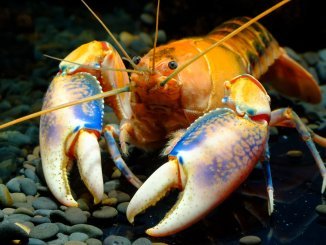
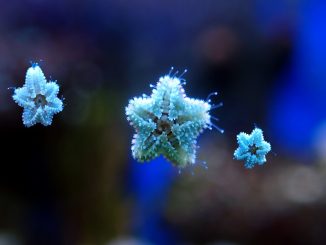
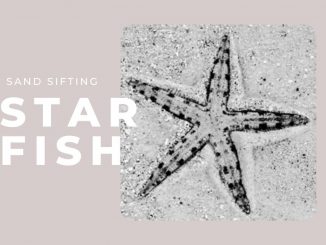
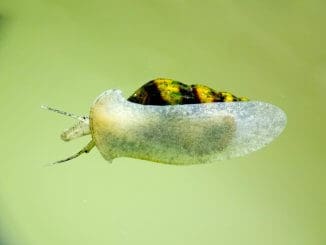
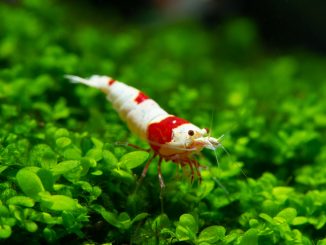
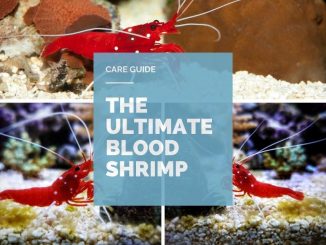
Be the first to comment